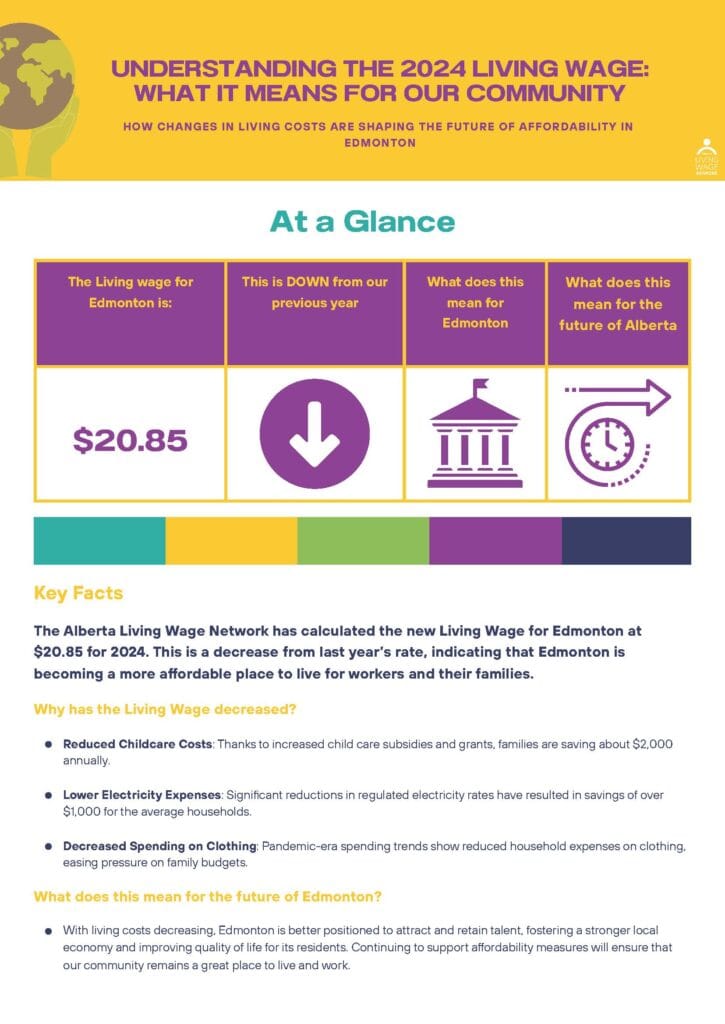[et_pb_section fb_built=”1″ _builder_version=”4.19.2″ _module_preset=”default” global_colors_info=”{}” theme_builder_area=”post_content”][/et_pb_section][et_pb_section fb_built=”1″ _builder_version=”4.16″ custom_margin=”0px||0px||false|false” custom_padding=”0px||0px||false|false” global_colors_info=”{}” theme_builder_area=”post_content”][et_pb_row column_structure=”3_4,1_4″ use_custom_gutter=”on” _builder_version=”4.16″ _module_preset=”default” width=”100%” custom_margin=”0px||||false|false” custom_padding=”0px||0px||false|false” border_width_bottom=”1px” border_color_bottom=”#a6c942″ global_colors_info=”{}” theme_builder_area=”post_content”][et_pb_column type=”3_4″ _builder_version=”4.16″ _module_preset=”default” global_colors_info=”{}” theme_builder_area=”post_content”][et_pb_post_title meta=”off” featured_image=”off” _builder_version=”4.16″ _module_preset=”default” title_font=”||||||||” custom_margin=”||3px|||” border_color_bottom=”#a6c942″ global_colors_info=”{}” theme_builder_area=”post_content”][/et_pb_post_title][/et_pb_column][et_pb_column type=”1_4″ _builder_version=”4.16″ _module_preset=”default” global_colors_info=”{}” theme_builder_area=”post_content”][et_pb_image src=”https://edmontonsocialplanning.ca/wp-content/uploads/2020/12/COLOUR-BLOCKS_spaced-300×51.png” title_text=”COLOUR BLOCKS_spaced” align=”center” _builder_version=”4.7.7″ _module_preset=”default” max_width=”100%” max_height=”75px” custom_margin=”0px|0px|0px|0px|false|false” custom_padding=”10px|0px|20px|0px|false|false” global_module=”96648″ global_colors_info=”{}” theme_builder_area=”post_content”][/et_pb_image][/et_pb_column][/et_pb_row][et_pb_row column_structure=”3_4,1_4″ use_custom_gutter=”on” make_equal=”on” _builder_version=”4.16″ background_size=”initial” background_position=”top_left” background_repeat=”repeat” width=”100%” custom_margin=”0px|auto|0px|auto|false|false” custom_padding=”30px|0px|0px|0px|false|false” global_colors_info=”{}” theme_builder_area=”post_content”][et_pb_column type=”3_4″ _builder_version=”4.16″ custom_padding=”0px|0px|0px|0px|false|false” global_colors_info=”{}” custom_padding__hover=”|||” theme_builder_area=”post_content”][et_pb_text _builder_version=”4.16″ _dynamic_attributes=”content” _module_preset=”default” text_font=”|600|||||||” text_text_color=”#2b303a” custom_padding=”||32px|||” global_colors_info=”{}” theme_builder_area=”post_content”]@ET-DC@eyJkeW5hbWljIjp0cnVlLCJjb250ZW50IjoicG9zdF9kYXRlIiwic2V0dGluZ3MiOnsiYmVmb3JlIjoiIiwiYWZ0ZXIiOiIiLCJkYXRlX2Zvcm1hdCI6ImRlZmF1bHQiLCJjdXN0b21fZGF0ZV9mb3JtYXQiOiIifX0=@[/et_pb_text][et_pb_text _builder_version=”4.27.2″ text_text_color=”#2b303a” text_line_height=”1.6em” header_2_font=”||||||||” header_2_text_color=”#008ac1″ header_2_font_size=”24px” background_size=”initial” background_position=”top_left” background_repeat=”repeat” text_orientation=”justified” width=”100%” module_alignment=”left” custom_margin=”0px|0px|0px|0px|false|false” custom_padding=”25px||||false|false” hover_enabled=”0″ locked=”off” global_colors_info=”{}” theme_builder_area=”post_content” sticky_enabled=”0″]
Written by Susanne Urbina
Each February, Canadians celebrate Black History Month in recognition of the achievements, contributions and struggles of Black people in Canada and their communities.
This year’s theme is “Black Legacy and Leadership: Celebrating Canadian History and Uplifting Future Generations”. Throughout this month, we acknowledge the diversity of Black Canadians, Black leadership importance and the legacy being established for future Black generations. For over 400 years, Black Canadians have a been a part of our nation’s narrative.
In 1604, Mathieu Da Costa was the first person of African heritage to arrive with French explorers to what is now Canada. He spoke 5 languages and was instrumental in communicating with the Mik’maq people encountered by the Europeans.
During the mid-to-late 1700’s, most Africans brought to Canada’s east coast were enslaved by English or American settlers, although there were some free Black persons living in the area.
Throughout the 1800’s, many Black communities were established across Canada because of war. Approximately 30,000Black people entered Canada by means of the Underground Railroad. This secret network of routes and hidden shelters allowed enslaved Africans to escape. Nova Scotia’s Black communities were also reinvigorated during and after the War of 1812.
Slavery was abolished in most British colonies and Canada, in 1833 through the “Act on the Abolition of Slavery in the British Empire.”
In 1879, many Black farming communities in the American mid-west who were experiencing inequality and fearing the rise in Ku Klux Klan lynchings, migrated to Alberta.
After Confederation and moving into the 1900’s, more Black communities were founded as immigration policies were reformed. Our civil rights movement was initiated after Viola Desmond, a Halifax businesswoman, reacted to racism, like Rosa Parks’ story. Viola refused to move from her seat in a Roseland theatre, in a “whites-only” section.
Further into the mid-century, the color barrier was broken in the National Hockey League (NHL) when Willie O’Ree from New Brunswick, was drafted to the Boston Bruins, the first Black player to play in the NHL. Our federal government saw the first Black Member of Parliament in the House of Commons, Lincoln Alexander, who was elected in 1968.
Within the last couple of decades, we have seen Black activism and more intersectional identities emerge for racial justice and celebrations of Black history, Black resilience and Black presence in Canada. Serving as the Governor General of Canada from 2005 to 2010, Michaelle Jean’s appointment was historic, as the first Black person to hold this position in Canada. Honorable Greg Fergus was elected as the 38th speaker of the House of Commons, in 2023. These 21st century events are proof of the movement to acknowledge, preserve, and celebrate the diverse contributions of Black Canadians.
The following article retells the Rosa Parks story. As we celebrate Black History Month, one can become more aware and understanding of this rich heritage through stories and events.
Reference
Government of Canada, (2025-01-31).
https://www.canada.ca/en/canadian-heritage/campaigns/black-history-month.html
Rosa Parks: The Spark That Ignited a Movement
Written by Shahina Hanif, ESPC volunteer
What can a single woman do to change history? While there are few instances of revolutions being credited to women of color, Rosa Parks stands out as a pivotal figure. Her courageous act of refusing to give up her bus seat to a white man in segregated Montgomery, Alabama, in the mid-1950s, became a defining moment in the American civil rights movement, paving the way for the African American community (Badertscher, 2005).
Her name resonates with the ideals of equality, justice, and freedom. On December 1st, 1955, Rosa Parks, refused to give her seat in the “colored” section of a city bus, at a white man’s command, when the seats in the “white only” section was filled up at (Badertscher, 2005). The bus driver had Parks arrested for “disorderly conduct” (Badertscher, 2005), which sent the African American community into a state of indignation.
This act of defiance sparked the Montgomery Bus Boycott, a fundamental event that lasted over a year and led to a Supreme Court ruling that segregation on public buses was unconstitutional (Badertscher, 2005). Rosa Parks’ bravery and the subsequent boycott galvanized the civil rights movement, inspiring countless individuals to stand up against racial injustice.
Rosa Parks’ legacy is a testament to the power of individual action in the face of systemic oppression. Her story reminds us that one person’s courage can ignite a movement and bring about profound change. Today, her name continues to inspire those who fight for equality and justice, proving that the actions of a single person, regardless of their background, can indeed change the course of history.
Upon reflection on Rosa Parks’ legacy, one is reminded of the power of individual courage, and the impact one person can have on the world. Her story inspires us to stand up for what is right, even in the face of adversity. At a time when segregation laws were strictly enforced and racial discrimination was rampant, Rosa Parks’ refusal to give up her seat was not just an act of defiance but a bold statement against an unjust system.
Rosa Parks once said, “I would like to be remembered as a person who wanted to be free, so other people would be also free” (Marie Claire, n.d.). Her words continue to resonate with those who fight for justice and equality. As we honor Rosa Parks’ legacy, let us also commit to standing up against injustice in our own communities.
Rosa Park’s Day is celebrated in several states on February 4th, her birthday. Other states celebrate her on December 1st, which is the day she was arrested for her activism. Her story sets the tone for the month of February as we recognize “Black History” month.
Rosa Parks’ legacy can inspire people in our city, Edmonton, to address and combat various forms of inequality. Here are some specific ways her story can resonate and motivate action within our community:
- Rosa Parks’ defiance can inspire Edmontonians to address income inequality by advocating for fair wages, supporting marginalized businesses, and pushing for equitable economic policies (Edmonton Social Planning Council, 2020).
- Her courage reminds us to stand up for Indigenous rights by promoting culture, advocating for better access to services, and addressing systemic issues like over-policing (CBC News, 2021).
- Parks’ legacy highlights the need to challenge racial discrimination through anti-racism training, supporting inclusive policies, and speaking out against microaggressions (Edmonton Social Planning Council, 2020).
- Inspired by Parks, Edmontonians can volunteer, join advocacy groups, and engage with local government to address inequality (CBC News, 2021).
- Her story encourages education on inequality, reading works by Black and Indigenous authors, and promoting awareness through community events (Edmonton Social Planning Council, 2020).
By drawing inspiration from Rosa Parks’ bravery and commitment to justice, individuals in Edmonton can take meaningful actions to address and reduce inequality in their own community. Her legacy serves as a powerful reminder that even small acts of courage can lead to significant change.

Rosa Parks, seated on the bus where her act of defiance became a symbol of resistance and change. Image from, “Rosa Parks” by Britannica https://www.britannica.com/biography/Rosa-Parks
References
Badertscher, E. (2005). Rosa Parks. Great Neck Publishing.
Britannica. (n.d.). Rosa Parks. In Britannica. Retrieved January 23, 2025, from
https://www.britannica.com/event/Montgomery-bus-boycott
CBC News. (2021, April 7). Edmonton city council votes to reallocate police funding to community safety programs. CBC News. Retrieved January 30, 2025, from
https://www.cbc.ca/news/canada/edmonton/city-council-policing-1.5971499
Edmonton Social Planning Council. (2020, June 5). Statement on the impact of systemic racism on income inequality and low-income households in Edmonton. Edmonton Social Planning Council. Retrieved January 30, 2025, from
https://edmontonsocialplanning.ca/2020/06/05/statement-on-the-impact-of-systemic-racism-on-income-inequality-and-low-income-households-in-edmonton/
Marie Claire. (n.d.). Remembering Rosa Parks: 8 Of Her Most Inspiring Quotes. Marie Claire. Retrieved January 23, 2025, from https://www.marieclaire.co.uk/news/remembering-rosa-parks-her-most-inspiring-quotes-29143
[/et_pb_text][dmpro_button_grid _builder_version=”4.18.0″ _module_preset=”default” global_colors_info=”{}” theme_builder_area=”post_content”][/dmpro_button_grid][dmpro_image_hotspot _builder_version=”4.17.4″ _module_preset=”default” global_colors_info=”{}” theme_builder_area=”post_content”][/dmpro_image_hotspot][/et_pb_column][et_pb_column type=”1_4″ _builder_version=”4.16″ custom_padding=”0px|20px|0px|20px|false|false” border_color_left=”#a6c942″ global_colors_info=”{}” custom_padding__hover=”|||” theme_builder_area=”post_content”][et_pb_testimonial author=”Posted by:” job_title=”@ET-DC@eyJkeW5hbWljIjp0cnVlLCJjb250ZW50IjoicG9zdF9hdXRob3IiLCJzZXR0aW5ncyI6eyJiZWZvcmUiOiIiLCJhZnRlciI6IiIsIm5hbWVfZm9ybWF0IjoiZGlzcGxheV9uYW1lIiwibGluayI6Im9uIiwibGlua19kZXN0aW5hdGlvbiI6ImF1dGhvcl93ZWJzaXRlIn19@” portrait_url=”@ET-DC@eyJkeW5hbWljIjp0cnVlLCJjb250ZW50IjoicG9zdF9hdXRob3JfcHJvZmlsZV9waWN0dXJlIiwic2V0dGluZ3MiOnt9fQ==@” quote_icon=”off” portrait_width=”125px” portrait_height=”125px” disabled_on=”on|off|off” _builder_version=”4.16″ _dynamic_attributes=”job_title,portrait_url” _module_preset=”default” body_text_color=”#000000″ author_font=”||||||||” author_text_align=”center” author_text_color=”#008ac1″ position_font=”||||||||” position_text_color=”#000000″ company_text_color=”#000000″ background_color=”#ffffff” text_orientation=”center” module_alignment=”center” custom_margin=”0px|0px|4px|0px|false|false” custom_padding=”32px|0px|0px|0px|false|false” global_colors_info=”{}” theme_builder_area=”post_content”][/et_pb_testimonial][et_pb_text disabled_on=”on|off|off” _builder_version=”4.16″ _dynamic_attributes=”content” _module_preset=”default” text_text_color=”#000000″ header_text_align=”left” header_text_color=”rgba(0,0,0,0.65)” header_font_size=”20px” text_orientation=”center” custom_margin=”||50px|||” custom_padding=”48px|||||” global_colors_info=”{}” theme_builder_area=”post_content”]@ET-DC@eyJkeW5hbWljIjp0cnVlLCJjb250ZW50IjoicG9zdF9jYXRlZ29yaWVzIiwic2V0dGluZ3MiOnsiYmVmb3JlIjoiUmVsYXRlZCBjYXRlZ29yaWVzOiAgIiwiYWZ0ZXIiOiIiLCJsaW5rX3RvX3Rlcm1fcGFnZSI6Im9uIiwic2VwYXJhdG9yIjoiIHwgIiwiY2F0ZWdvcnlfdHlwZSI6ImNhdGVnb3J5In19@[/et_pb_text][/et_pb_column][/et_pb_row][/et_pb_section]

